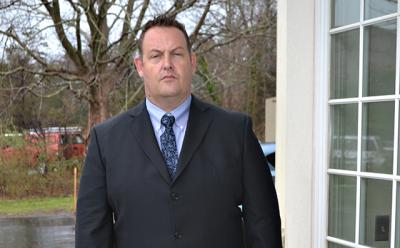James W. Thompson, 74
James W. Thompson, 74

James William Thompson, a Sag Harbor resident who as a Suffolk County Police detective sergeant fought the drug war on Long Island in the 1970s and ’80s and was part of one of the largest drug seizures off the coast of East Hampton, died March 17 in The Villages, a retirement community in central Florida. He was 74, and had chronic obstructive pulmonary disease.
Mr. Thompson was instrumental in forming the federal Drug Enforcement Administration’s Long Island Task Force in 1974, where he supervised Suffolk and Nassau detectives and D.E.A. agents. The task force landed one of the largest drug seizures and most significant drug arrests in the county’s history, his family said.
Under his leadership, the task force intercepted a Colombian trawler off the coast of East Hampton on Sept. 3, 1981. They uncovered 40,000 pounds of marijuana, which led to the arrest and conviction of six organized crime leaders, six Colombian nationals, and an additional 21 defendants.
Mr. Thompson was also known for arresting the president of the Pagans, an outlaw motorcycle gang, in 1978, which led to the seizure of millions of dollars of amphetamines and an arsenal of weapons. In 1979, his team took five kilograms of heroin off the streets in a Ronkonkoma bust, resulting in the arrest of five Mexican nationals.
This level of narcotics enforcement did not come without risk, his family said. The task force came under gunfire more than once. Once while executing a search warrant in Brooklyn, two officers were shot. They made a full recovery, but it had a profound impact on him. He cared about his officers and about getting the job done, and “always did the right thing,” the family said. “He left this world a better place than he found it.”
James Thompson, better known as Jim, was born in the Bronx on Aug. 17, 1941, to Marguerite Kinnard Thompson and Joseph Thompson. The family moved to Lindenhurst in 1959, where he met his wife of 53 years, the former Eleanor Timko. After graduating from Lindenhurst High School in 1960, he served in the Army National Guard.
On April 15, 1963, he joined the Suffolk County Police Department, starting in the First Precinct and quickly becoming an undercover narcotics investigator. He was promoted to sergeant in 1970, and just one year later was made a detective sergeant in the narcotics division.
After he retired in 1984, the family moved to Sag Harbor, where they opened a family restaurant in Noyac called Jim’s Anchorage. He sold it around 1990, and went on to establish a successful private investigation business. He also worked as the supervising investigator for the New York State Insurance Fraud Agency.
He was a member of the Sag Harbor Volunteer Ambulance Corps and a board member of St. Andrew’s School in Sag Harbor.
His greatest pride was his family, including his children, grandchildren, nephews, and extended family. “He enjoyed nothing more than pulling up his fish onto his boat with friends or taking a family picnic on his boat out into the middle of Noyac Bay,” his family said.
Mr. Thompson is survived by his wife and two daughters, June Ellen Haynal of Sag Harbor and Susan Marie Peterson of East Hampton. A son, James W. Thompson Jr., predeceased him, as did three brothers, Joseph, John, and Edward Thompson. A sister, Marie Shabatt of Lewiston, Pa., and a sister-in-law, Jean Thompson of West Babylon, also survive. He leaves four grandchildren and many nephews, nieces, and their children.
Visiting hours will be held tomorrow at the Yardley and Pino Funeral Home in Sag Harbor from 2 to 4 and 7 to 9 p.m. There will be a funeral Mass at St. Andrew’s Catholic Church, of which he was a member, at 10:30 a.m. on Saturday, with burial to follow at St. Andrew’s cemetery.
Memorial donations may be made to the Sag Harbor Volunteer Ambulance Corps, P.O. Box 2725, Sag Harbor 11963.
Correction: A funeral service for James W. Thompson is at 10:30 a.m. on Saturday, not 8:30 a.m., as initially reported.







